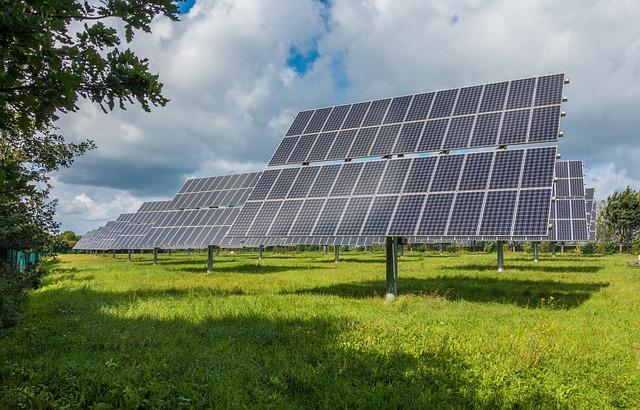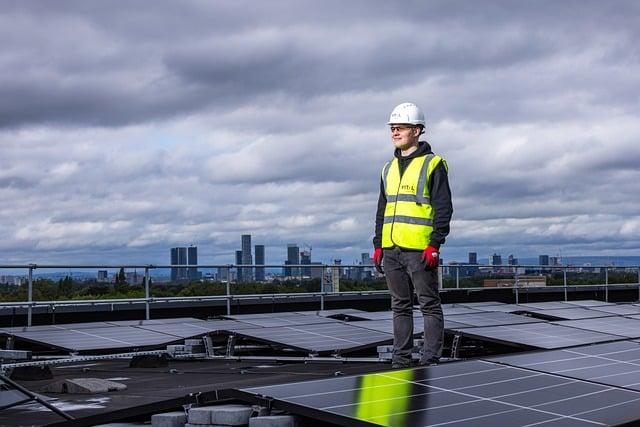- Introduction
- How Does Space-Based Solar Power Work?
- Advantages of Space-Based Solar Power
- Challenges and Technological Barriers
- Future Perspectives and Ongoing Research
- Conclusion
- FAQs
- References
Introduction
Space-based solar power (SBSP) is an innovative concept that involves collecting solar energy in space and directing it to Earth for use. A space-based system offers a solution to many of the limitations faced by traditional terrestrial solar power, like weather conditions and night cycles. This article will explore how SBSP works, the advantages it can offer, the technological challenges preventing its immediate implementation, and the future possibilities associated with space-based solar energy.
We'll begin with explaining how SBSP works, go over the significant benefits, then discuss the obstacles that make it difficult to realize on a large scale, and finally, we'll look at what's on the horizon for this exciting energy source.
How Does Space-Based Solar Power Work?

(Image: Pixabay/@OpenClipart-Vectors)
The core idea behind space-based solar power is straightforward: place huge solar arrays in space to harness sunlight and beam the generated energy back down to Earth. To understand how this concept works, it’s necessary to recognize that space above Earth offers a much more consistent and abundant source of solar energy than the surface of our planet. Without atmospheric interference, solar panels in space can continuously collect sunlight—even during the night or cloudy periods Earth experiences.
But how does space-based solar power reach Earth? Typically, the process would involve the use of microwave or laser beams to transmit the collected energy back to terrestrial receiving stations called rectennas. These systems allow the collected power to be converted into usable electricity, efficiently supplying grid systems. The advantage here is the near-constant access to a massive, untapped power source.
Moreover, advancements in photovoltaic cells, laser technology, and wireless power transmission make the dream of SBSP increasingly feasible. While no large-scale system exists yet, smaller experimental setups, like Japan's JAXA tests, have shown it’s possible to transmit power wirelessly from space.
Despite all these developments, practical deployment remains a challenge requiring international cooperation, significant investment, and technologies not yet fully developed. Still, if these hurdles are overcome, space-based solar power could transform global energy markets.
Advantages of Space-Based Solar Power

(Image: Pixabay/@mrganso)
Space-based solar power has the potential to drastically alter the world’s energy landscape. Here are some of the notable advantages:
1. A Continuous Energy Supply: Unlike terrestrial solar farms, which are limited by time of day and local weather conditions, solar collectors placed in space do not experience nightfalls or cloudy skies. They can theoretically provide 24/7 power, making consistent energy output a key benefit.
2. Unlimited Solar Access: The amount of solar energy available in space is far greater compared to on the Earth's surface, as the atmosphere absorbs and scatters part of the sunlight before it reaches us. Solar power stations in space can collect energy at full efficiency.
3. Reduction of Land Usage and Environmental Footprint: Because SBSP systems operate outside Earth’s atmosphere, they don’t occupy large land areas, as ground solar fields and wind turbines do. This means fewer land disruptions and more opportunity to preserve natural habitats.
4. Energy Independence and Security: Countries that lack the geographic conditions for terrestrial renewable energy—such as deserts for solar farms or windy locations for wind turbines—could benefit from space-based solar power. This would allow nations to rely less on imported fossil fuels and boost energy security.
Challenges and Technological Barriers

(Image: Pixabay/@Placidplace)
While space-based solar power offers many enticing advantages, several major challenges prevent large-scale implementation. Here are some of the key technological barriers:
1. Launch Costs and Logistics: One of the most significant obstacles is the immense cost associated with launching solar panels and other required infrastructure into space. Even with the progress in reusable rockets reducing launch prices, sending massive arrays to geosynchronous orbit remains prohibitively expensive.
2. Efficient Transmission of Energy: Another formidable technical challenge is transmitting energy from space back to Earth. Wireless transmission, either via microwaves or lasers, requires extremely high efficiency to ensure that the transmitted energy doesn’t diminish significantly during transit. Current technology is far from ideal for large-scale operations.
3. Potential Environmental and Health Risks: Some scientists have raised concerns about the long-term environmental impacts of transmitting energy wirelessly. Microwaves and laser transmissions may affect birds, aircraft, or even the atmosphere itself, sparking caution around proceeding without extensive testing.
4. Political and Regulatory Hurdles: Any space-based project—especially one involving satellites transmitting powerful beams of energy across national borders—faces a minefield of regulatory and policy challenges. From international treaties governing outer space to sovereign rights over air space, there are various legal frameworks to navigate.
Future Perspectives and Ongoing Research

(Image: Pixabay/@TheDigitalArtist)
Despite the current challenges, research and development efforts surrounding space-based solar power are gaining momentum. Various space agencies, including NASA, JAXA (Japan Aerospace Exploration Agency), and the European Space Agency (ESA) are laying the groundwork for small-scale demonstrations of this technology. These pilot projects represent crucial first steps toward commercial deployment.
Private space ventures and commercial entities like SpaceX and Blue Origin are also increasingly involved in advancing the needed launch technologies, which help reduce the costs associated with placing solar stations in orbit. Their work will likely play a pivotal role in the future development of SBSP.
In addition to lowering costs, scientists and engineers are also focusing on improving energy conversion and transmission methods, particularly around using high-efficiency photovoltaic materials, more effective storage solutions, and safer methods of wireless transmission.
Ultimately, space-based solar power has the potential to be one of humanity’s premier solutions as we transition away from fossil fuels and seek renewable, consistent sources of energy. Projects supported by both government and private-sector funding are paving the way to overcoming existing challenges.
Conclusion
Space-based solar power represents a radical shift in how we think about clean energy production—but significant challenges remain before it becomes viable on a global scale. Despite these hurdles, the persistent drive by researchers and entrepreneurs ignites hope for a future where solar power from outer space might fuel everything from homes to industries worldwide.
As new innovations emerge and costs drop, SBSP may come to fruition within the next few decades, elevating solar power beyond anything achieved on Earth. This futuristic solution could well usher in a new era of sustainable energy—and change our relationship with the cosmos for the better.
FAQs
What is Space-Based Solar Power exactly?
Space-Based Solar Power involves collecting solar energy in space, where sunlight is stronger and uninterrupted, and beaming it to Earth using microwaves or lasers.
What are the main advantages of SBSP?
SBSP provides continuous energy supply, greater access to solar energy, reduced land usage, and enhanced energy independence and security.
How viable is SBSP in the short term?
Although promising, the high costs and technological challenges make SBSP more of a long-term objective that requires further research and substantial financial investment.
Are there risks involved in wireless energy transmission from space?
Yes, there are potential environmental and health risks that need extensive study, specifically related to the frequencies used in beaming solar energy back to Earth.

